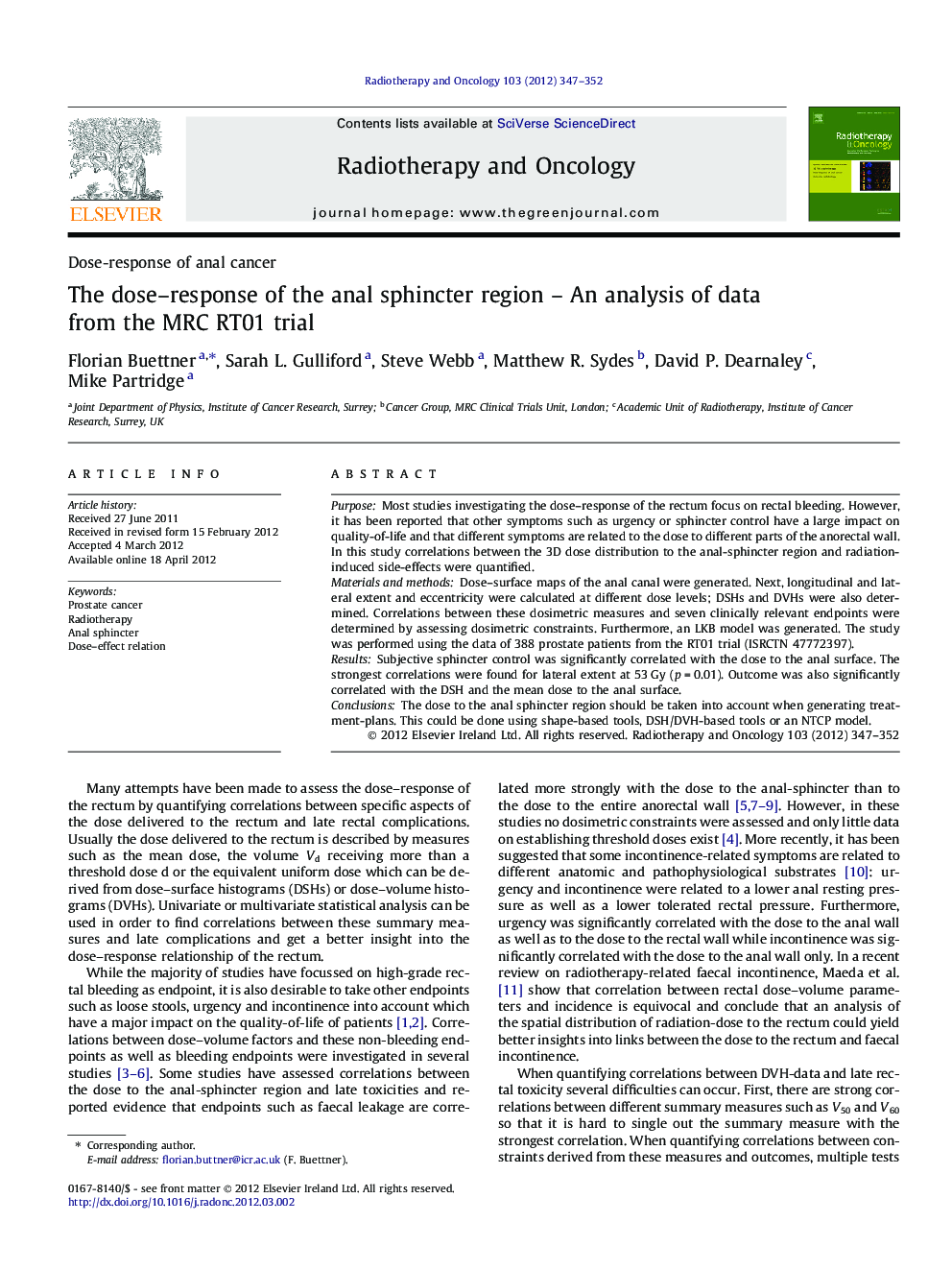| Article ID | Journal | Published Year | Pages | File Type |
|---|---|---|---|---|
| 2158224 | Radiotherapy and Oncology | 2012 | 6 Pages |
PurposeMost studies investigating the dose–response of the rectum focus on rectal bleeding. However, it has been reported that other symptoms such as urgency or sphincter control have a large impact on quality-of-life and that different symptoms are related to the dose to different parts of the anorectal wall. In this study correlations between the 3D dose distribution to the anal-sphincter region and radiation-induced side-effects were quantified.Materials and methodsDose–surface maps of the anal canal were generated. Next, longitudinal and lateral extent and eccentricity were calculated at different dose levels; DSHs and DVHs were also determined. Correlations between these dosimetric measures and seven clinically relevant endpoints were determined by assessing dosimetric constraints. Furthermore, an LKB model was generated. The study was performed using the data of 388 prostate patients from the RT01 trial (ISRCTN 47772397).ResultsSubjective sphincter control was significantly correlated with the dose to the anal surface. The strongest correlations were found for lateral extent at 53 Gy (p = 0.01). Outcome was also significantly correlated with the DSH and the mean dose to the anal surface.ConclusionsThe dose to the anal sphincter region should be taken into account when generating treatment-plans. This could be done using shape-based tools, DSH/DVH-based tools or an NTCP model.
